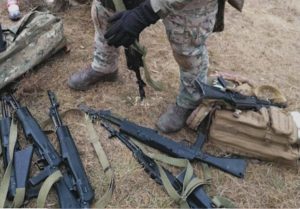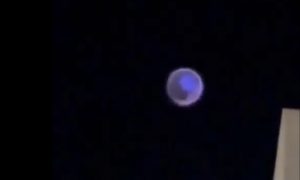The long arm of Kim Il Sung
The development of self-propelled artillery in the Korean People’s Army (KPA) has a long history. During the Korean War, the KPA used approximately three hundred SU-76 self-propelled guns (by July 1953, only 127 of these SPGs remained in service). After the war, the KPA received a small number of ISU-122s from China. SU-100s also made their appearance – according to some estimates, about a hundred. In the late 1960s, the Koreans launched their own development. Initially, they were, as they say, sculpting self-propelled vehicles from what they had. This resulted in several self-propelled artillery systems that used the chassis of the ATC-59 tracked tractor and various versions of 130mm and 152mm guns. Western observers have identified almost a dozen modifications of such self-propelled artillery systems, and we will not go into all their variety in this article. Let’s turn to another artillery system that is better known and well-studied.
Reaching Seoul
The specificity of the military-strategic situation of the Republic of Korea is the vulnerable location of its capital: Seoul is separated from the demilitarized zone (the actual border with the DPRK) by only fifty kilometers. Therefore, sooner or later, the DPRK leadership had to come up with an idea: why not build a cannon capable of reaching the enemy capital? The practical realization of this idea began in the early 1970s.
The North Korean engineers’ efforts resulted in a 170mm self-propelled gun.
The origin of this unusual caliber is not clear. Western media suggest that this weapon was based on the German 17-cm Kanone 18 in Mörserlafette, as the Soviet Union allegedly supplied several of these trophy guns to the North Koreans. However, no material or documentary evidence of this version has yet been found. The most likely version is that the artillery part of the North Korean gun was created on the basis of the Japanese 15-cm (149mm) Type 96 siege gun.
With a barrel length of almost 53 caliber, this weapon had a firing range of 26.3 km. The Japanese produced only 30 of these guns, which distinguished themselves in 1942 during the siege of Corregidor in the Philippines and were later used in coastal defense and fortified areas of Manchuria. Several Type 96 guns went to the DPRK, among those that defended the ports of Racine and Wonsan.

The result of the efforts of North Korean specialists was a 170mm gun with a 50 caliber barrel (over 8 m) with a slotted muzzle brake. The gun has a separate loading, and the practical rate of fire is estimated at two shots within five minutes. The range of a conventional high-explosive fragmentation projectile is 43 km, and the range of an active-reactive projectile is 54-60 km.
A combat vehicle
From the very beginning, the new long-range gun was designed to be self-propelled – in a trailered version, it would be too bulky and unmobile. The self-propelled gun used a tank-type chassis borrowed from the Soviet medium tank T-54/55 or its Chinese Type 59 “clone.” The gun is mounted openly, and the mounting method is quite interesting. There are rails on the roof of the chassis hull that can be used to move the artillery unit. In the stowage position, it is located in the center of the vehicle, ensuring a more or less even weight distribution over the support rollers. In the firing position, the gun is moved to the stern. This makes it easier to load from the ground, and most importantly, the bulk of the recoil energy is transferred to the ground instead of the hull (via two hydraulically lowered colters).

The first version of the 170-mm self-propelled gun is known as the M1978. Like all other designations of North Korean military equipment, it is nominal and does not mean the year of adoption but the year when the self-propelled gun first came to the attention of Western experts. The names “Koksan” (a town halfway between Pyongyang and the demilitarized zone, where the SPG was first spotted) and Juche-po (“Juche Gun”) are also conventional. The actual designation of the SAM is currently unknown. It is believed that production of the M1978 began around 1973. The self-propelled gun was first publicly presented at a parade in 1987.
In the first version, the Koksan was a typical self-propelled carriage, not a full-fledged self-propelled vehicle – the ammunition was transported by additional vehicles. No special ammunition transporters were created – the shells were delivered by ordinary trucks, mainly Sungri-58 and Sungri-61 (North Korean “clones” of GAZ-51 and GAZ-63).

The self-propelled gun crew consists of eight people – a driver, a commander, a gunner, and five loaders/pickers. Only the driver and the commander are in the vehicle in the forward position, while the rest of the crew is transported by escort vehicles.
In 1989, an improved version of the Koksan was spotted, which received the quite logical designation M1989. It features a radically redesigned hull resembling the Soviet 2S7 Pion self-propelled gun, with a large front overhang and a forward-facing cab. The increased volume of the hull made it possible to accommodate not two but four soldiers of the crew, as well as to organize a compartment for transporting 12 shells with charges. In addition, the vehicle can carry a man-portable air defense system.
The number of manufactured Koksan systems is unknown. Western analysts estimate it at about five hundred copies. The structure of the units armed with these self-propelled guns is also not precisely known. Koksans are believed to be organized into three-battery divisions (four guns per battery). The number of personnel in the division is estimated at 150-190 people. In addition to a dozen guns, it has about 20 vehicles. If these analysts’ estimates are correct, the Koksan division has limited autonomy – the existing vehicle fleet is not capable of delivering a significant amount of ammunition. In turn, the divisions are organized into regiments or brigades with 36 self-propelled artillery systems.

As far as we can tell from the available information, the KPA’s tactics involve the massive use of heavy artillery. In particular, during the exercises held on March 25, 2016, in the presence of North Korean leader Kim Jong-un, about a hundred M1978 and M1989 self-propelled guns took up positions on the sea coast near Wonsan Airport and fired at the island of Hwangto-do. However, a quite reasonable question arises: isn’t the concentration of such a large mass of artillery in a small area just a simple training ground show? After all, in real combat operations, self-propelled guns clustered in a position can be easily hit by aircraft or counter-battery fire.

In the Middle East
Exports brought Koksan popularity. After the outbreak of the Iran-Iraq war, the DPRK became one of the leading suppliers of weapons to Iran. It mainly supplied weapons of Soviet and Chinese design, “cloned” in the DPRK. Several dozen original M1978 self-propelled guns stood out against the general background, delivered to Iran before the beginning of 1987. Their combat debut took place in January 1987 during the Kerbala-5 operation near Basra. “The Koksans were used for massive artillery attacks, including the use of full-range rocket-propelled grenades. As you know, the operation, which was supposed to ensure Iran’s victory in the war, ended in failure. Iraqi troops took numerous trophies, including several Koksan (there is even information about thirty captured self-propelled artillery systems of this type). The surviving Koksans are still in service with the Iranian military.

The episode with the Iraqi Koksan is a peculiar page in the history of the self-propelled gun. Inspired by the trophies, the Iraqis tried to create a similar artillery system. The limited industrial base of the country did not allow them to copy the artillery unit, so the Iraqis took a ready-made solution – the S-23 180mm gun. This Soviet-made gun had a 47-caliber barrel and provided a range of 30 km with a conventional high-explosive fragmentation projectile and 44 km with a rocket-assisted projectile. The Iraqis used the East German-made BLG-60 tank bridge paver as a chassis. The open arrangement of the artillery unit, hydraulically driven colters, and other details of the Iraqi Koksan largely repeated the North Korean original. Apparently, the self-propelled artillery system was manufactured in a single copy, captured by US troops in the city of Al-Anbar in 2003.

***
The Koksan self-propelled artillery system, developed in the 1970s, became the first example of North Korean “strategic” weapons, a kind of “long arm” of the DPRK’s military and political leadership. Before the advent of missile weapons, these guns were the only means capable of hitting the key centers of the Republic of Korea – the capital, Seoul, and the port of Incheon – from North Korea. With the development of missile technology, the importance of the Koksan as a strategic weapon has diminished. However, these self-propelled guns remain an important component of the Korean People’s Army’s armament.
SUPPORT MILITARNYI
Even a single donation or a $1 subscription will help us contnue working and developing. Fund independent military media and have access to credible information.


 Urich
Urich 
 Андрій Харук
Андрій Харук 
 Контужений Безпілотник
Контужений Безпілотник 

 Центр ініціатив ПЖ
Центр ініціатив ПЖ 



 Vadim Kushnikov
Vadim Kushnikov 
 Андрій Тарасенко
Андрій Тарасенко 
 Юрій Юзич
Юрій Юзич 
 Віктор Шолудько
Віктор Шолудько 
 Роман Приходько
Роман Приходько 








